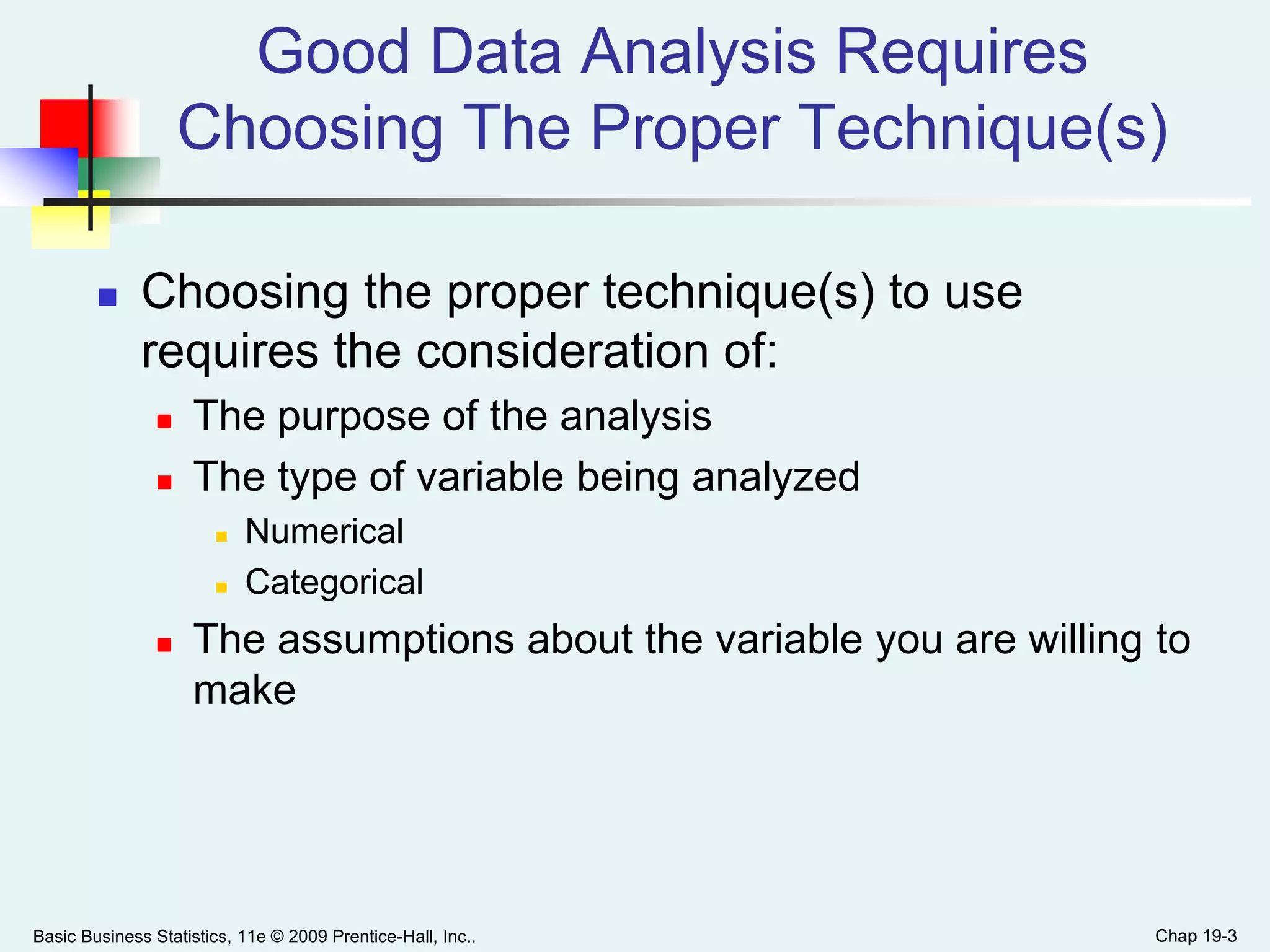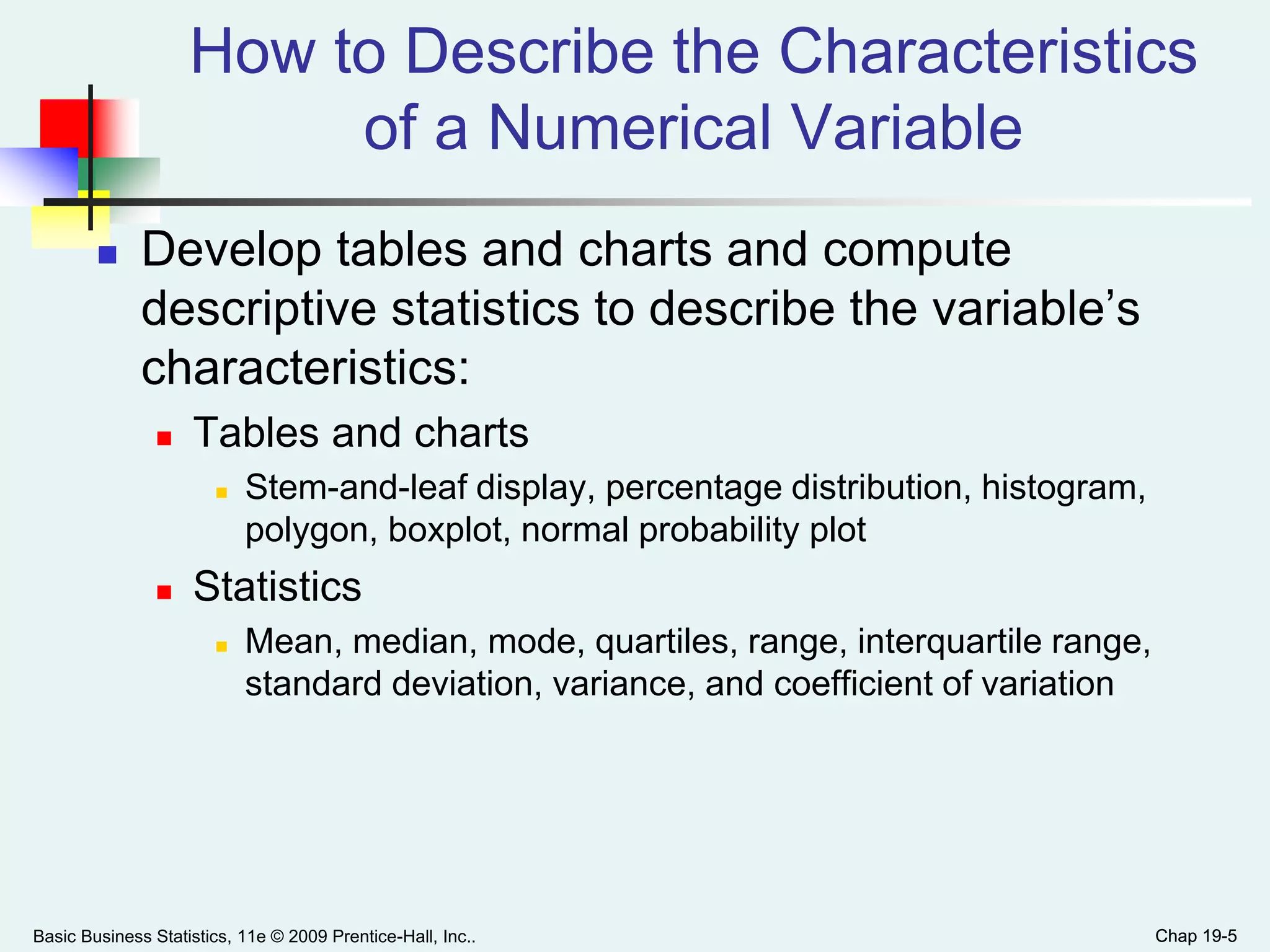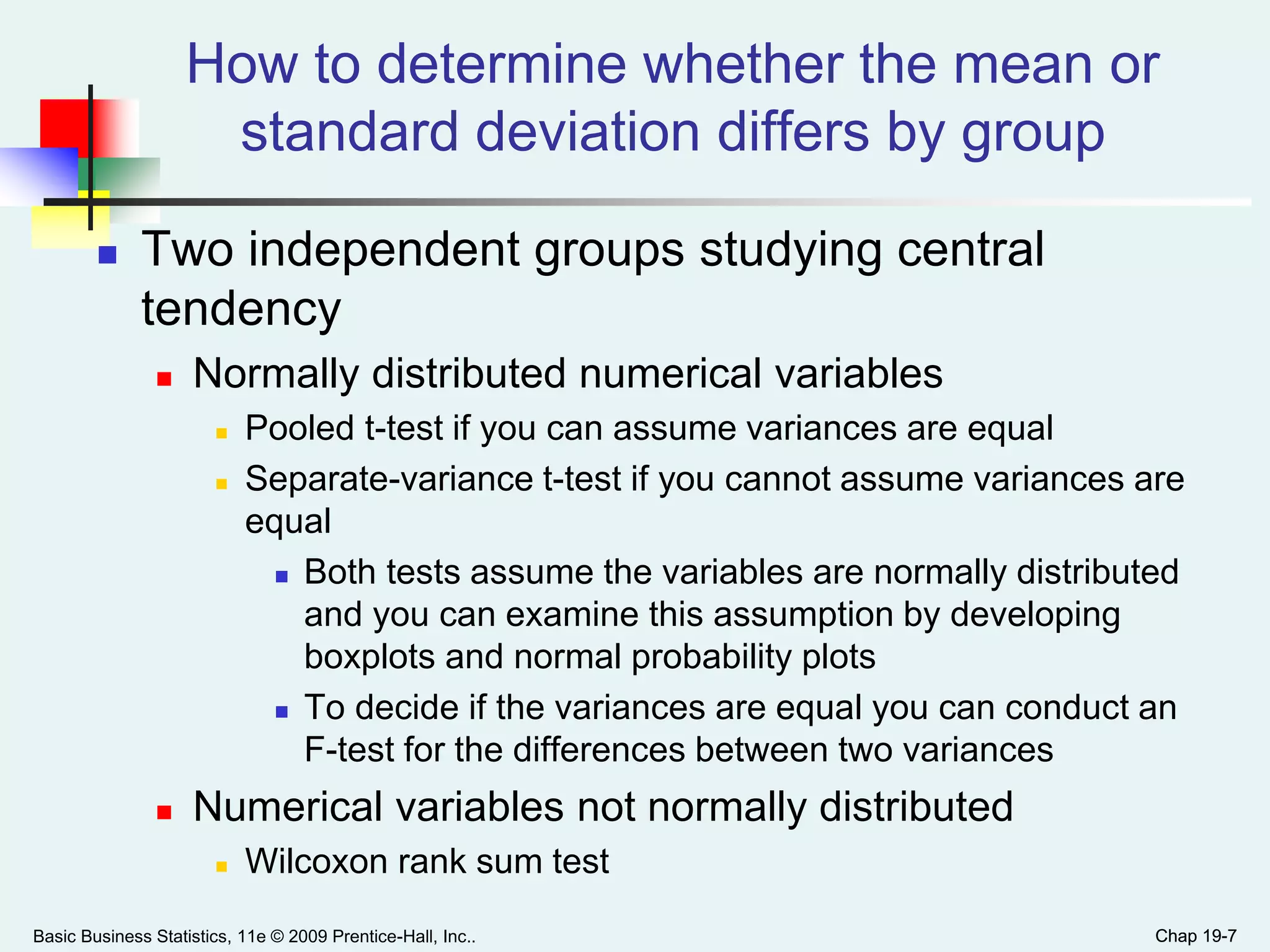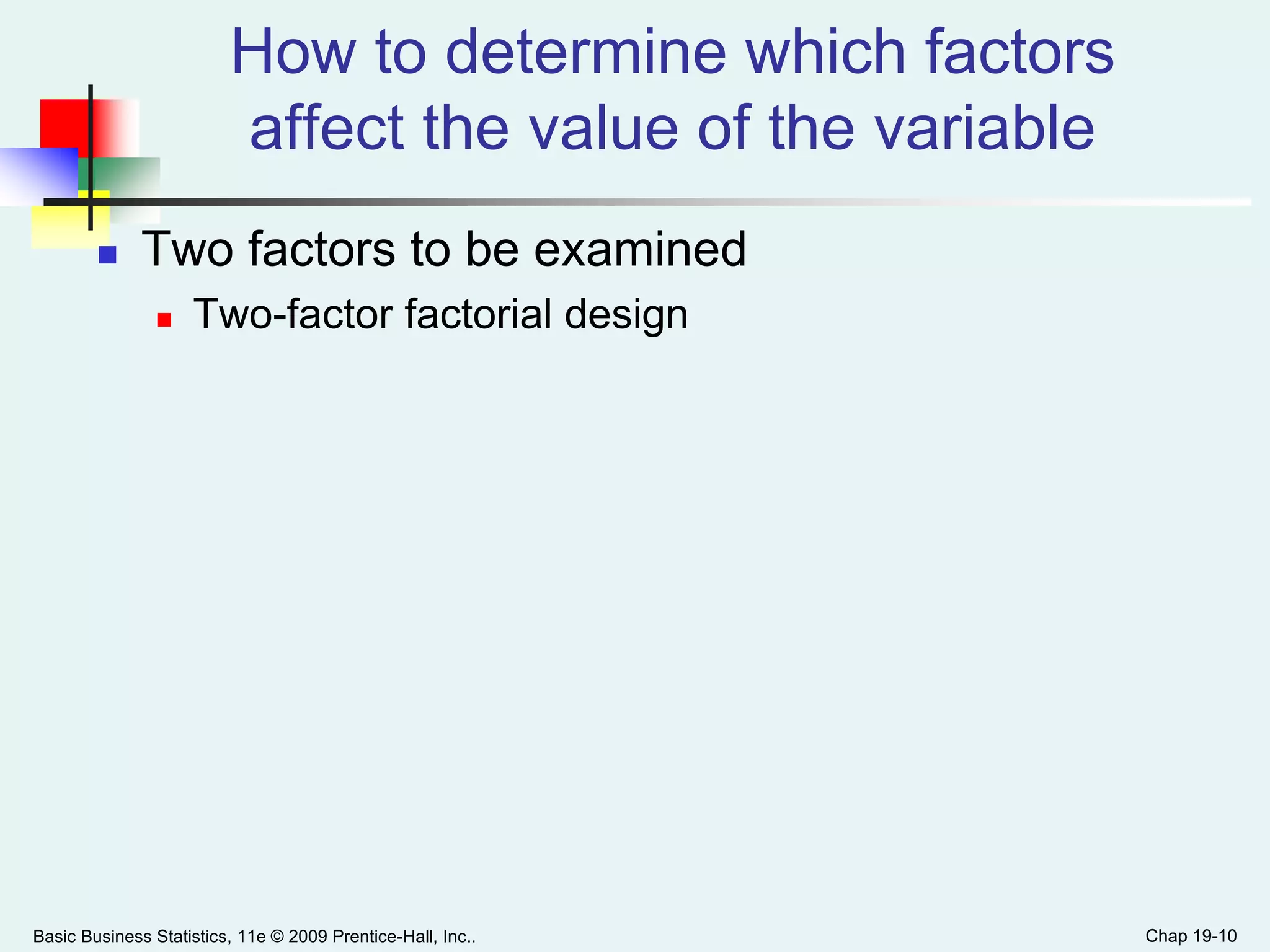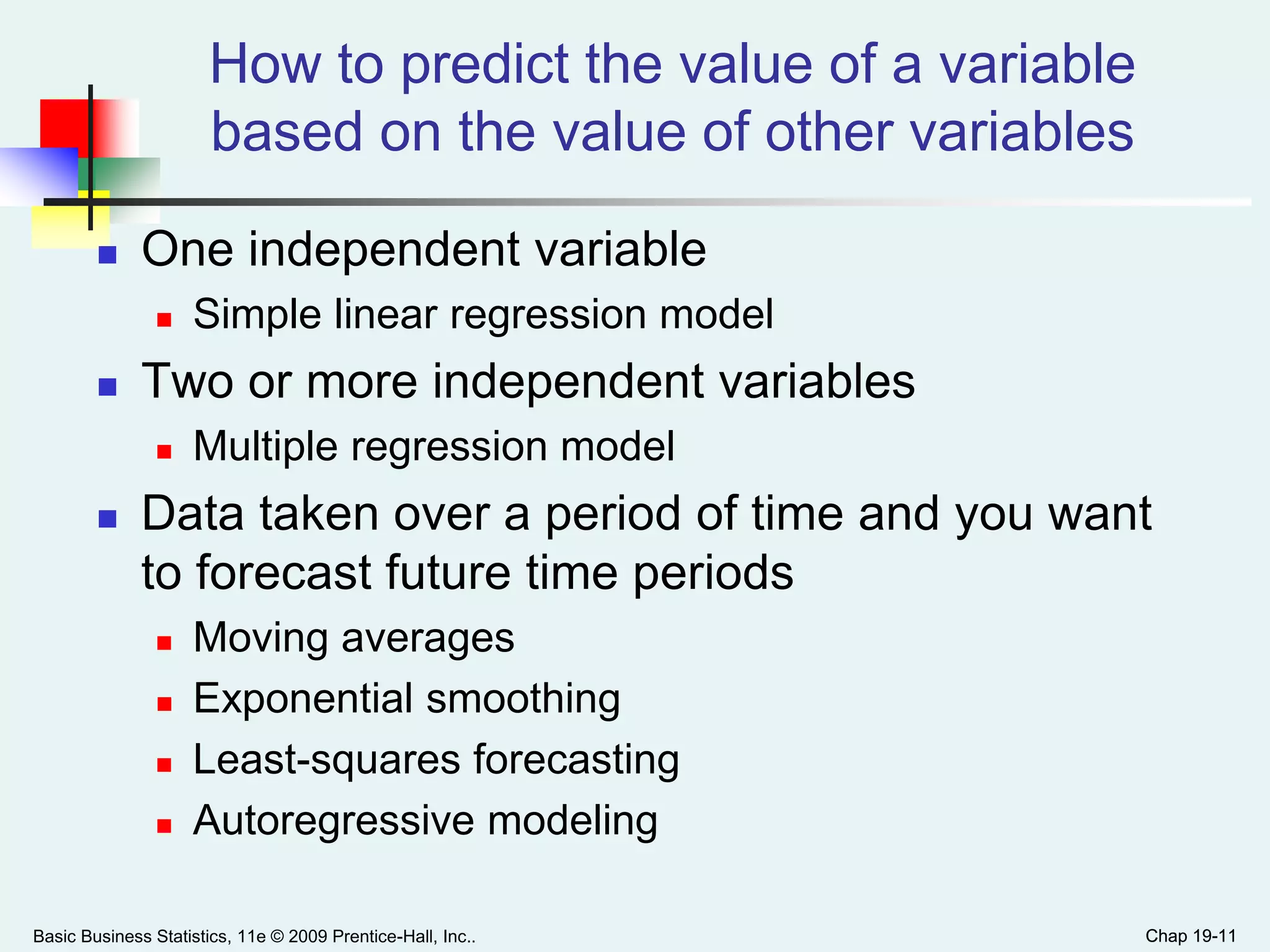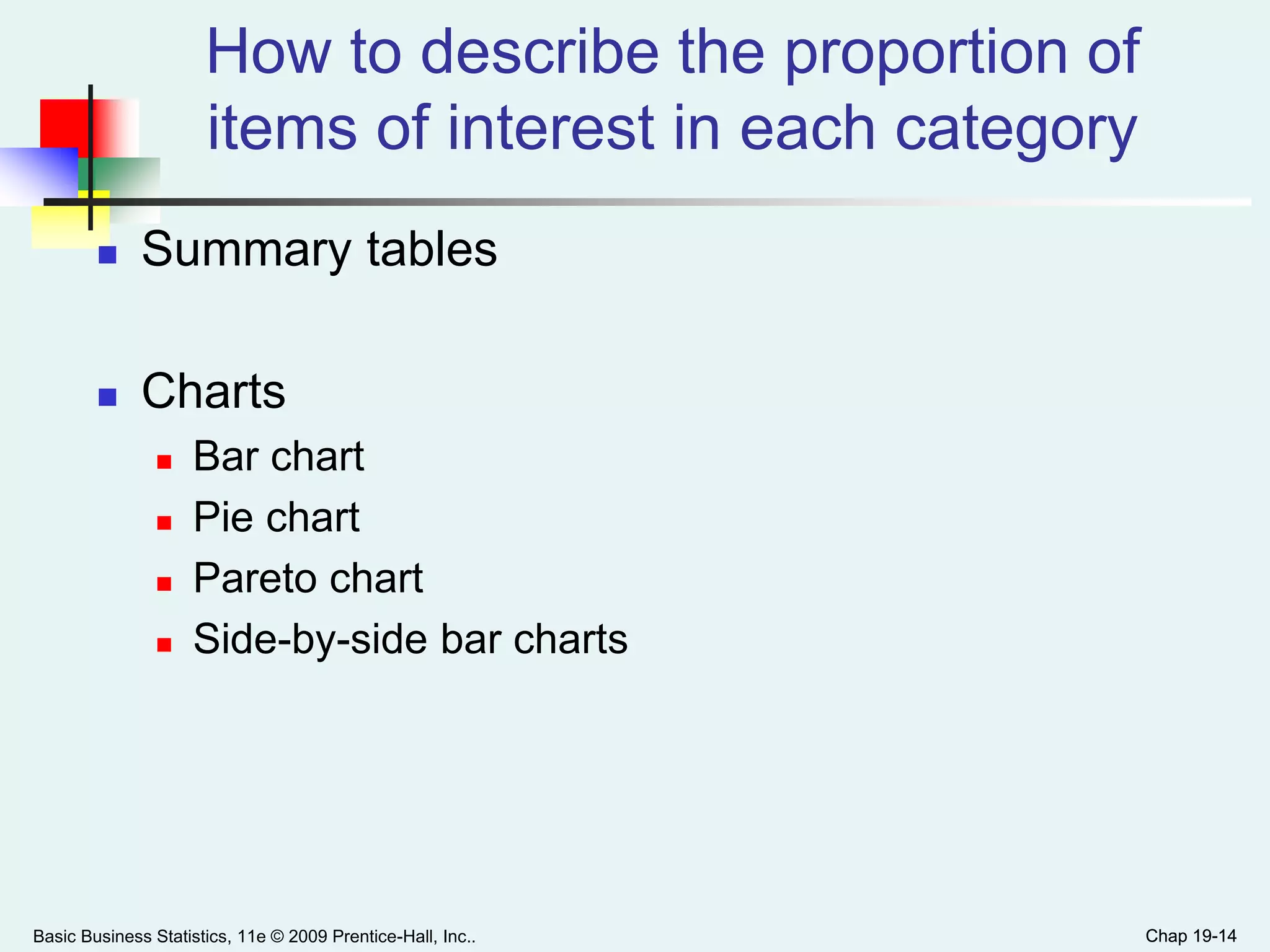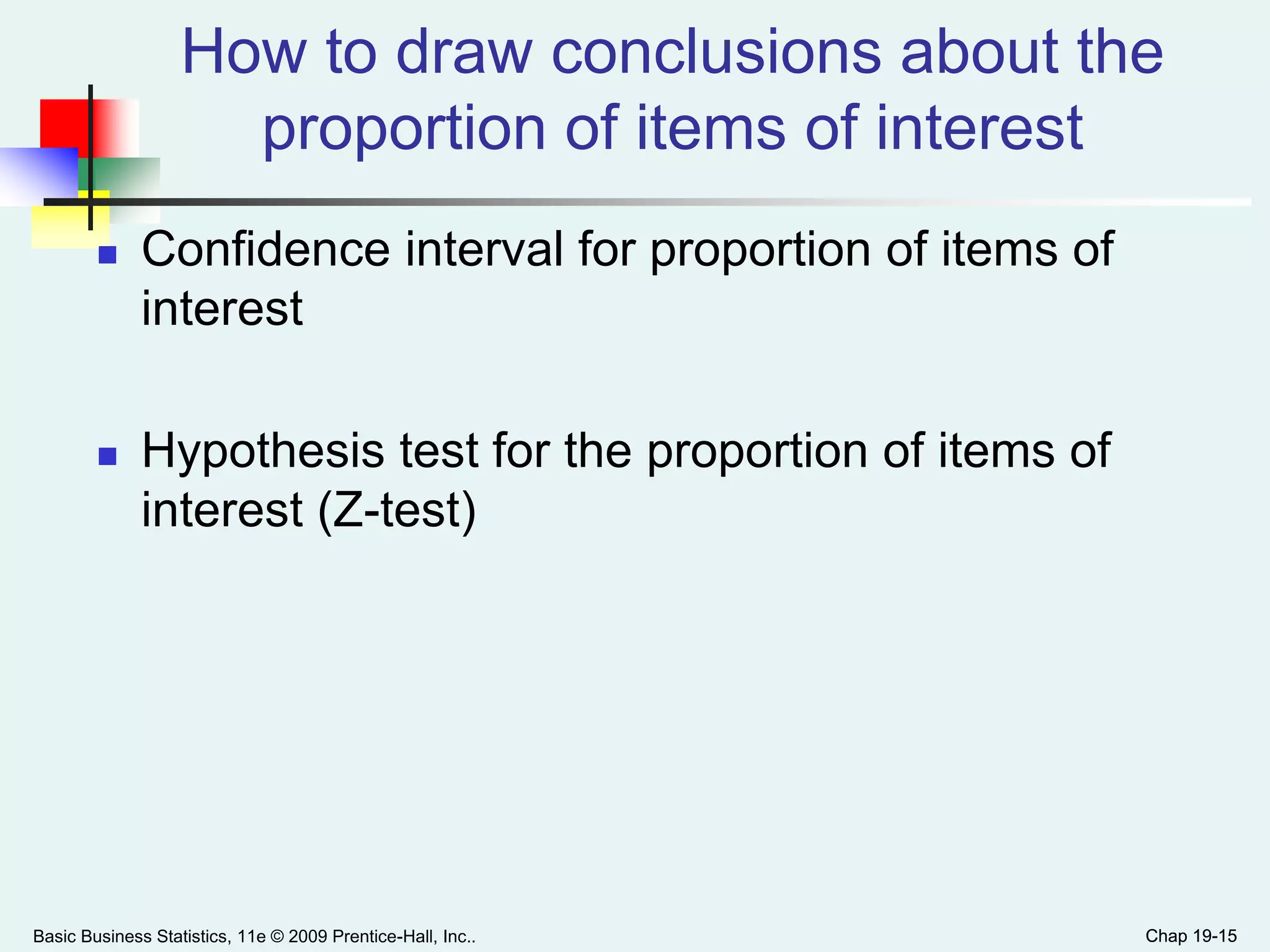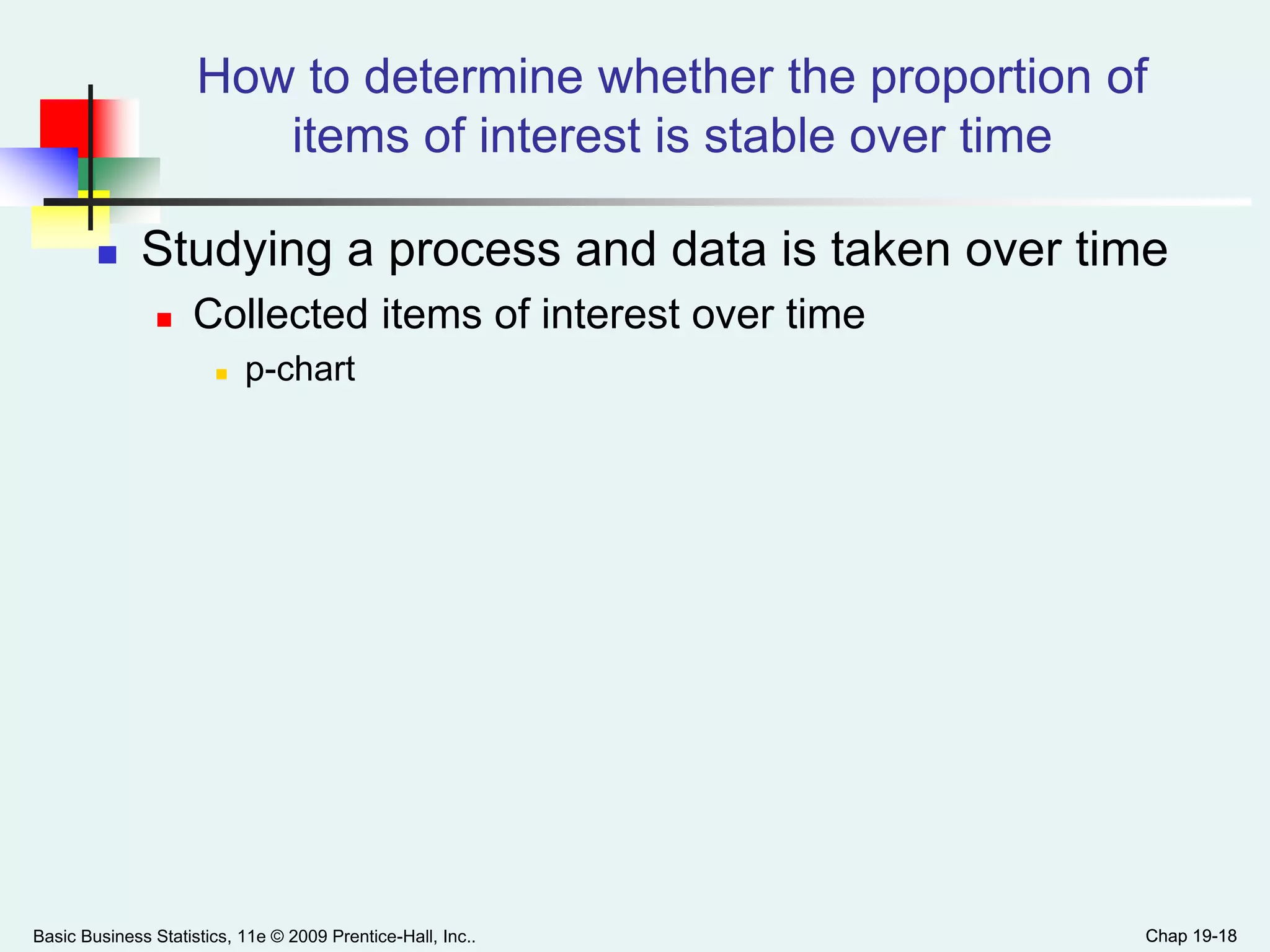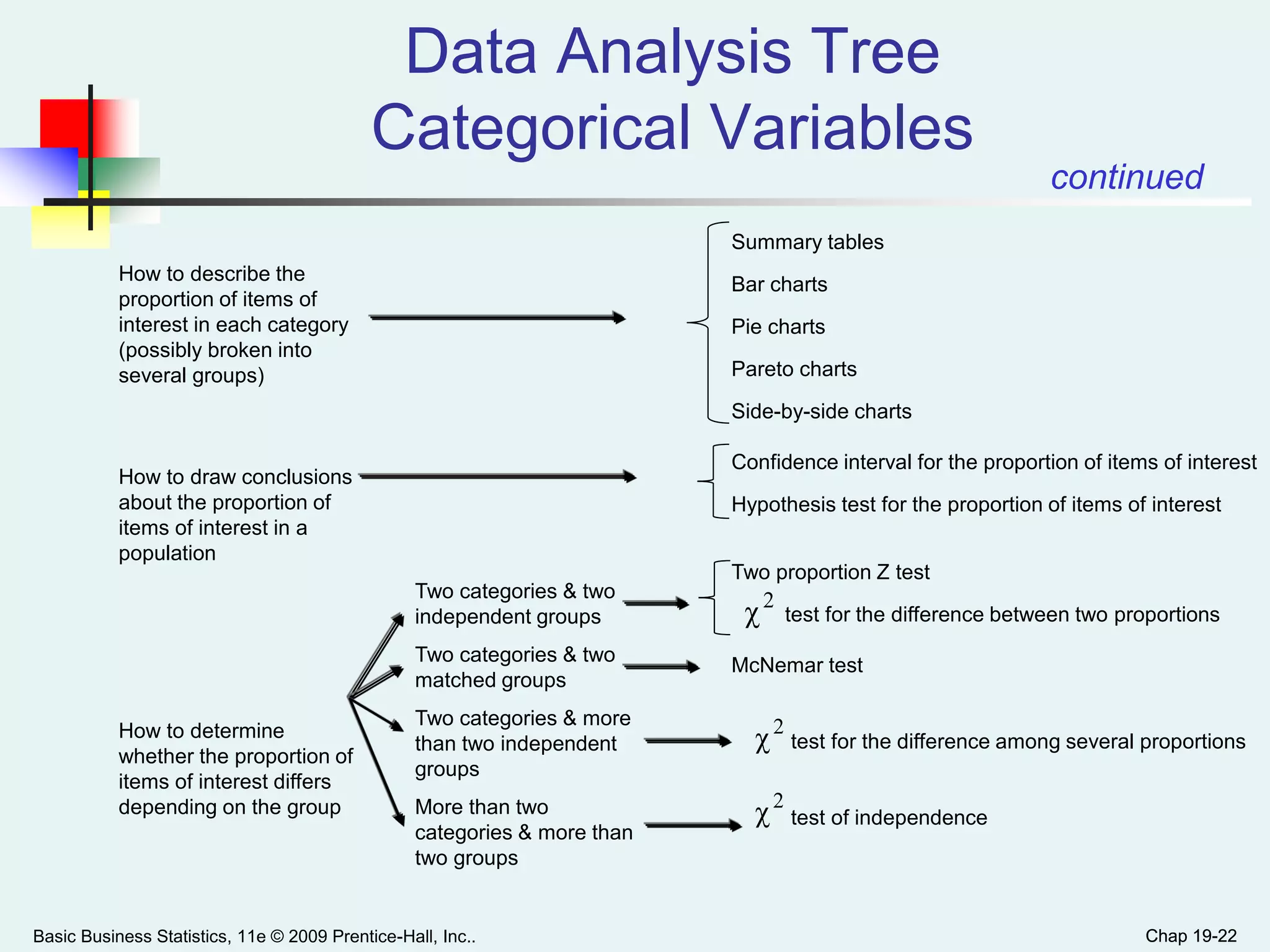This chapter discusses choosing appropriate statistical techniques for analyzing numerical and categorical data. For numerical variables, it identifies questions about describing characteristics, drawing conclusions about the mean/standard deviation, determining differences between groups, identifying influencing factors, predicting values, and determining stability over time. For each, it lists relevant techniques. For categorical variables, it addresses similar questions and outlines techniques like hypothesis testing, regression, and control charts. The goal is to match the right analysis to the data type and research purpose.


